#Yokote Kamakura Snow Festival
Explore tagged Tumblr posts
Photo


Yokote Kamakura Snow Festival
February 15th — February 16th
The ritual of hollowing out a mound of snow and building a small hut like an igloo is called “kamakura” (かまくら) in the snowy regions of northern Japan. Each year, more than 100 kamakura and many miniature versions are made around Yokote City in Akita Prefecture for the Yokote Kamakura Snow Festival (横手の雪まつり, Yokote no Yuki Matsuri). Candles are placed inside these igloo-like structures and visitors are invited inside to drink sake and eat rice cakes.
#Japan#Snow Festival#Yokote#Akita Prefecture#Yokote Kamakura Snow Festival#Kamakura#かまくら#Yokote no Yuki Matsuri#横手の雪まつり#Festival#Matsuri#Winter#Night#Nippon#Winter Events#Kamakura Snow Festival#Snow Huts
19 notes
·
View notes
Text
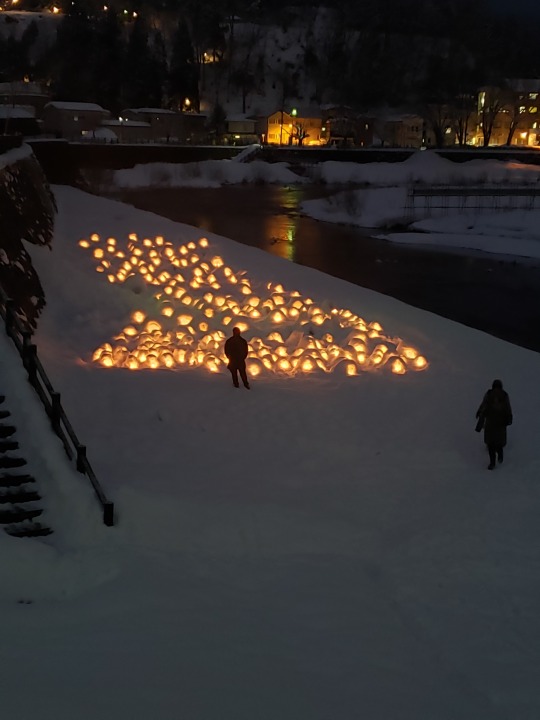


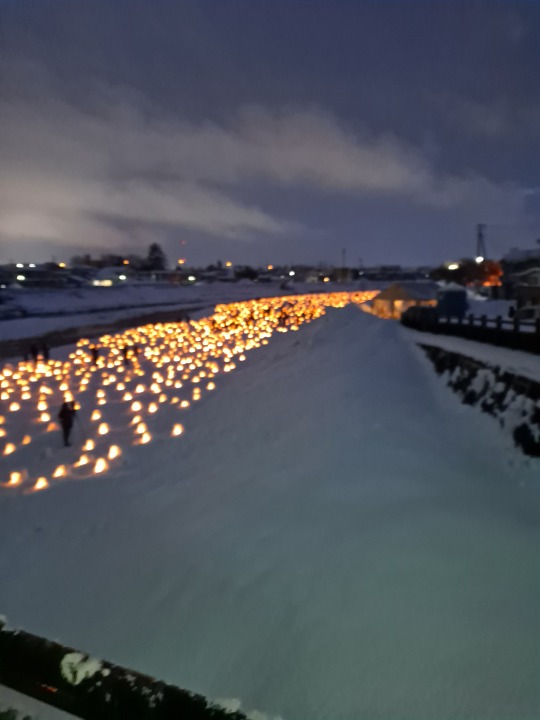

2023-02-16, Yokote: Destination two at the Yokote Kamakura festival. Each one of these lights is a foot-tall snow hut with a tea light. Easily hundreds, perhaps thousands of them lighting up the riverside. Breathtaking stuff.
0 notes
Text
ive got to add - upon more research, i found out there is a annual festival in japan called the yokote kamakura festival (横手の雪まつり) and has been going on for 450 years and is held around mid february.
visitors to the snow houses (かまくら) that are placed across yokote are offered rice cakes and amazake.
for anyone wanting more information :)
im currently in the middle of reading and translating a short story and i had a breakdown translating this one sentence:
次、かまくらをつくりましょう!
with the help of jisho, i managed to translate it to: "let's make a kamakura!"
with the story set outside in the snow... this literally made zero sense to me. i recenly learnt that in japan, they call snowman, だるま so i assume theres a link between the two.
#this is so fascinating#this is one of those rabbit holes i fell into while studying japanese#and it will defiantly won't be the last
41 notes
·
View notes
Photo
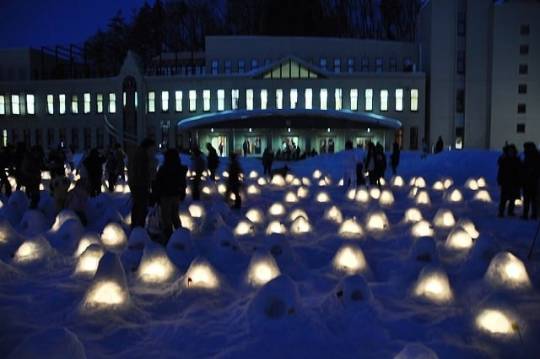
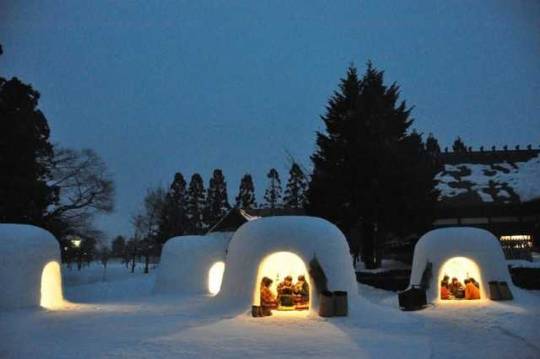
Yokote Kamakura Snow Festival 2017-2018: An Amazing Winter In Akita!
Held in Yokote, Akita prefecture, the Yokote Kamakura Snow Festival centers on the traditional New Year event of 'kamakura'. The fantastic snowy world and winter Bon Den festival are must-see events at this unique matsuri!
https://matcha-jp.com/en/3856
30 notes
·
View notes
Text
秋田県
Japanese Prefectures: Tohoku - Akita
都道府県 (とどうふけん) - Prefectures of Japan
Learning the kanji and a little bit about each of Japan’s 47 prefectures!
Kanji・漢字
秋 あき、シュウ autumn
田 た、デン rice field
県 ケン prefecture
東北 とうほく north-east, Tōhoku (northernmost six prefectures of Honshu)
Prefectural Capital (県庁所在地) : Akita (秋田市)
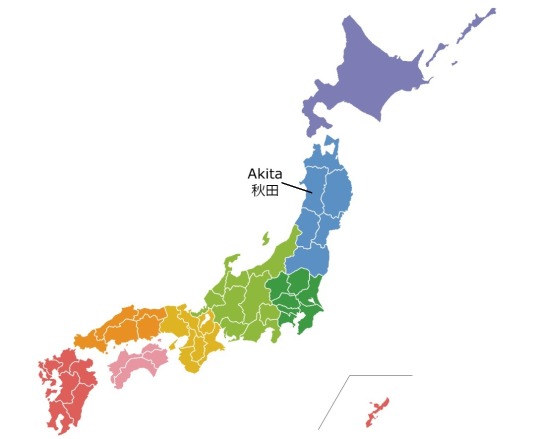
Akita prefecture is known for the natural beauty of the sea and mountains, hot springs, and the preserved samurai district in the town of Kakunodate. The capital of Akita prefecture is Akita City, and the economy of the prefecture is structured around traditional industries such as fishing and agriculture, particularly rice cultivation, as well as high-quality sake. Akita's numerous seasonal festivals offer insight into traditional culture, especially the New Year's Eve Namahage Festival of Oga, which is unique to the Oga Peninsula area of Akita prefecture. The Namahage are demon-like beings which are portrayed by men dressed as masked ogres (oni) with traditional straw capes (mino), who go door-to-door in pairs or threes and admonish children who are lazy or who have been behaving badly. They are commonly shown on TV news making children cry as they visit homes in the neighbourhood during the New Year celebrations. Other, less traumatizing, festivals include the Yokote Kamakura Festival in February, where igloo-like snow houses (kamakura) are built across the city of Yokote, inside of each of which is a snow altar to the water deity to pray for ample water; or the Tsuchizaki Shinmeisha Shrine Float Festival, where floats with warrior dolls parade around the port area of Akita City. The women of the region are also famous as 秋田美人 (Akita bijin) or "beauties of Akita" and are known for their white skin, rounded faces and high voices.
Recommended Tourist Spot・おすすめ観光スポット
Nyūtō Onsen - 乳頭温泉郷

By Bjckashiwa
Nyūtō Onsen is a traditional hot spring town in the eastern mountains of Akita. The town has six ryokan, or traditional inns, some of which date from the Edo period, and a hotel. The most famous hot springs is Tsurunoyu, which is over 300 years old, and considered to be one of the best establishments in all of Japan for a traditional and authentic onsen ryokan experience in the countryside. The onsen in the town can also be visited with general admission for those not staying in the inns. Most of the ryokan have mixed-gender onsen in addition to the male-only and female-only baths. The Yumeguri Pass can be purchased at the ryokan, allowing access to all seven of the hot springs, and a reservation at the ryokan on a shuttle bus allows for easy access to all of the onsen. Nyūtō Onsen means "nipple hot spring" referring to the shape of Mount Nyūtō nearby. The mountains and the deepest lake in Japan, Tazawako, are only a 30-minute bus ride from Nyūtō Onsen.
Regional Cuisine - 郷土料理
Kiritampo Hot Pot - きりたんぽ鍋

Photo from HIS
Kiritampo are tubes of rice mashed up into a paste, wrapped around a skewer, and grilled on an open flame. These traditional tubes of sticky rice are then placed in a nabe (hot pot) with local meats and vegetables and cooked together, creating a dish perfect for the frigid winter.
Akita Dialect・Akita-ben・秋田弁
泣く子はいねがぁ (naku ko wa ine gaa)
Standard Japanese: 泣く子はいないか (naku ko wa inai ka) English: Is there a crybaby here? Note: A standard line used by Namahage during the Namahage Festival
あい、しかだね (ai, shika dane)
Standard Japanese: ありゃ~、仕方ないなあ (arya, shikata nai naa) English: Oh no, it can't be helped Note: Said when the other person does something by accident (casual)
これをけ (kore o ke)
Standard Japanese: これを食べてください (kore o tabete kudasai) English: Please eat this
どでした (do deshita)
Standard Japanese: びっくりした (bikkuri shita) English: I was surprised
#japanese prefectures#日本語#japanese#japanese language#japanese langblr#langblr#studyblr#都道府県#秋田県#akita
100 notes
·
View notes
Photo
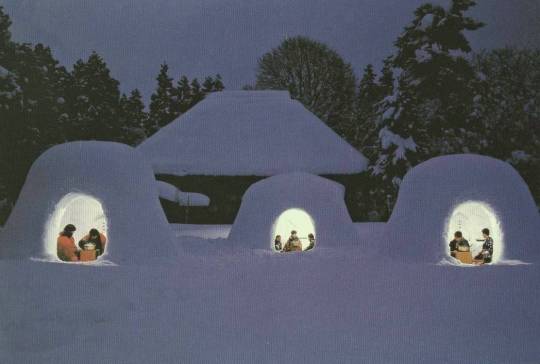
Postcard of kamakura (snow hut) festival, Yokote, Japan
8 notes
·
View notes
Photo

Ch. 681, pg. 11
Kamakura is the name of a city in Japan’s Kanagawa Prefecture, but this technique refers to the name of the snow huts built for the Snow Festival which takes place February 15 in the city of Yokote in Akita
Appropriately, this technique creates a dense barrier of snow, reminiscent of the kamakura huts. In the Viz translation, this technique is called Igloo for the sake of being a more recognizable concept to a western audience
Also, I do believe that this is Monet’s first named technique and the first time we see her using her Devil Fruit!
Technique count - 1
3 notes
·
View notes
Photo
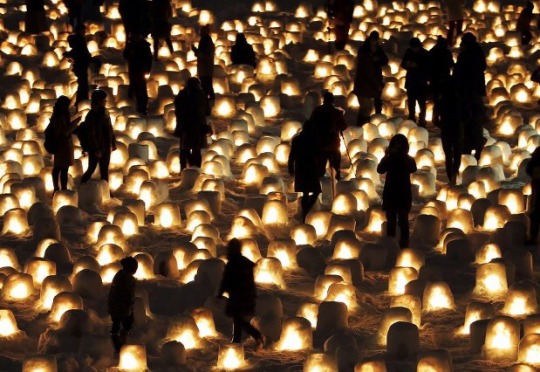


Kamakura festival in Yokote, Akita prefecture (15-16 Feb).
1K notes
·
View notes
Text
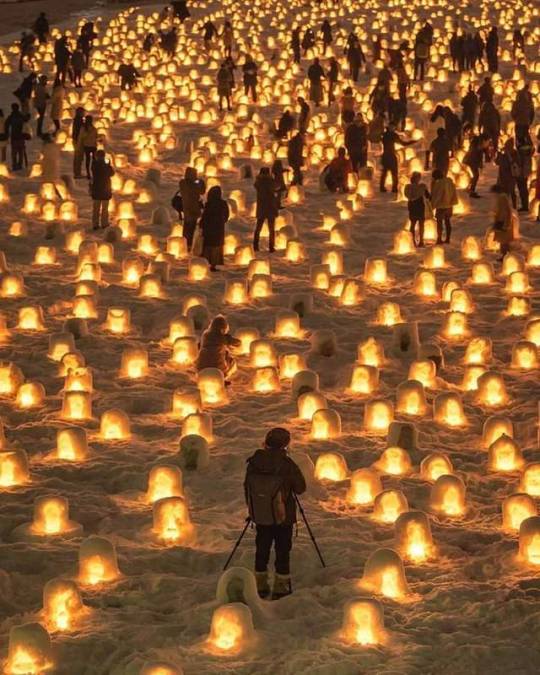
El festival de nieve de invierno más espectacular de Japón, Yokote Kamakura Snow Festival
By: @hrk1108
4 notes
·
View notes
Photo
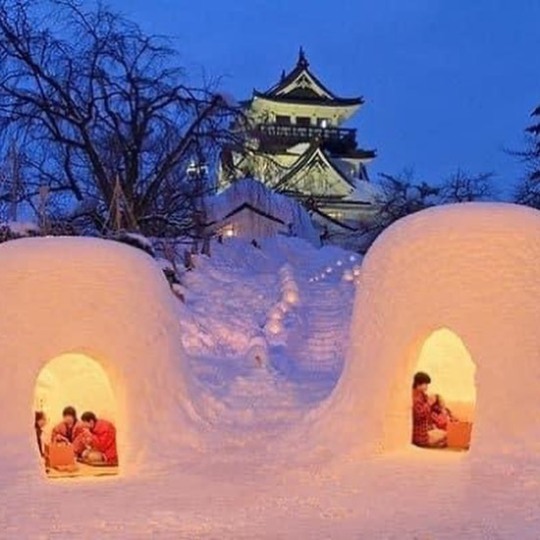
Yokote Kamakura Festival The Yokote Kamakura Festival (横手の雪まつ, Yokote no Yuki Matsuri) has a history of about 450 years. It is held every year on February 15 and 16 in the city of Yokote in southeastern Akita Prefecture. The festival features many igloo-like snow houses, called kamakura, which are built at various locations across the city. Within each kamakura there is a snow altar dedicated to the water deity, to whom people pray for ample water. A charcoal brazier is set up to provide warmth and grill rice cakes. In the evenings (18:00 to 21:00), children invite festival visitors into their kamakura and offer them rice cakes and amazake, a type of warm sweet rice wine with zero or very low alcohol content. In return, the visitors make an offering to the water deity at the altar. The Kamakurakan Hall preserves a couple of kamakura all year round in a small -10 degree Celsius room, making it possible for visitors to see these snow houses even during warmer months. In the area close to the hall, many kamakura, snow sculptures and festival food stalls can be found, contributing to a lively atmosphere. 📸: Unknown #festival #横手の雪まつり #yukimatsuri #amazake #igloo #snowsculptures #iceroom #snowroom #akita #februaryfestival #festivalseason #japanesefestival #akita_pref #ricecakes #snowyfebruary #waterdeity #kamakurahut #kamakura #photography #temple #nature #buddha #travelphotography #kamakurajapan #shrinr #travel #japan https://www.instagram.com/p/CHVIAOulM27/?igshid=vbx22pu1lqsp
#festival#横手の雪まつり#yukimatsuri#amazake#igloo#snowsculptures#iceroom#snowroom#akita#februaryfestival#festivalseason#japanesefestival#akita_pref#ricecakes#snowyfebruary#waterdeity#kamakurahut#kamakura#photography#temple#nature#buddha#travelphotography#kamakurajapan#shrinr#travel#japan
0 notes
Photo


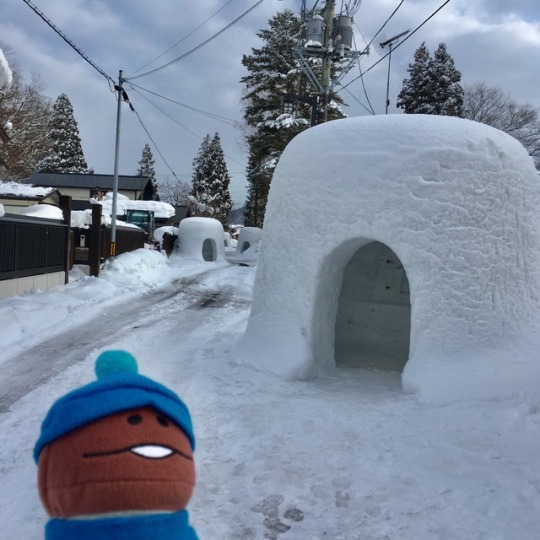

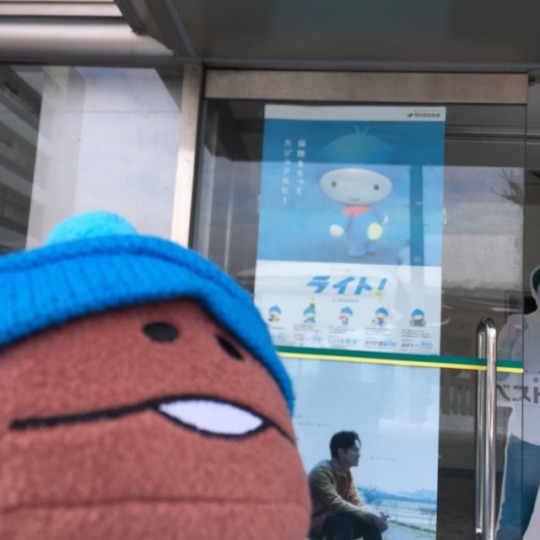
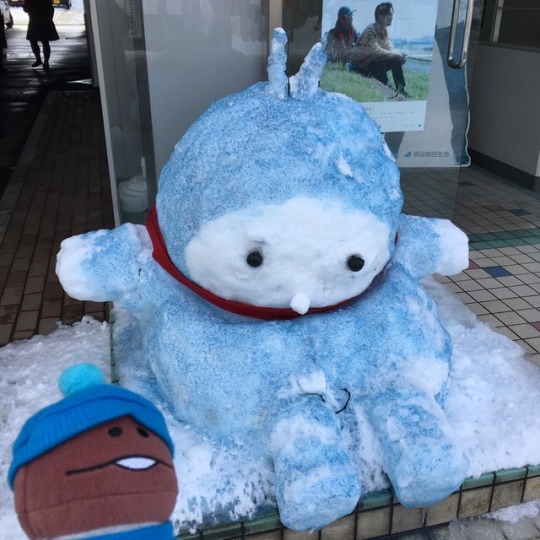

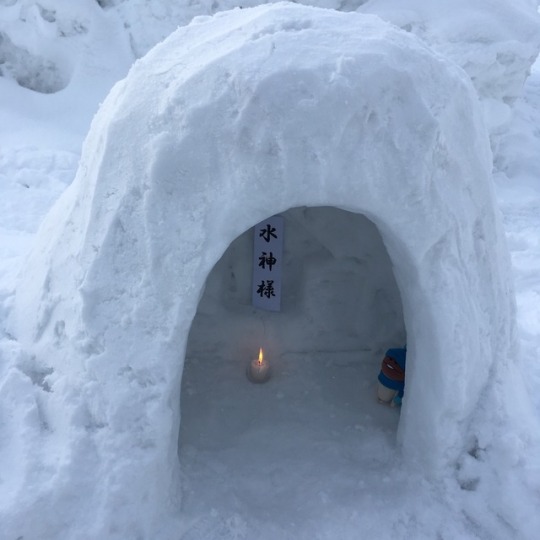
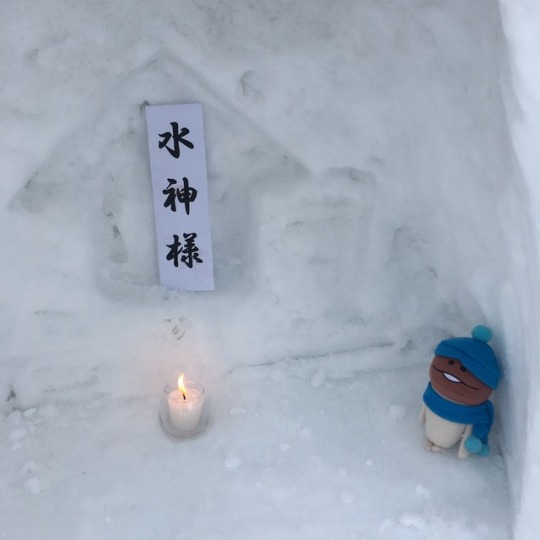
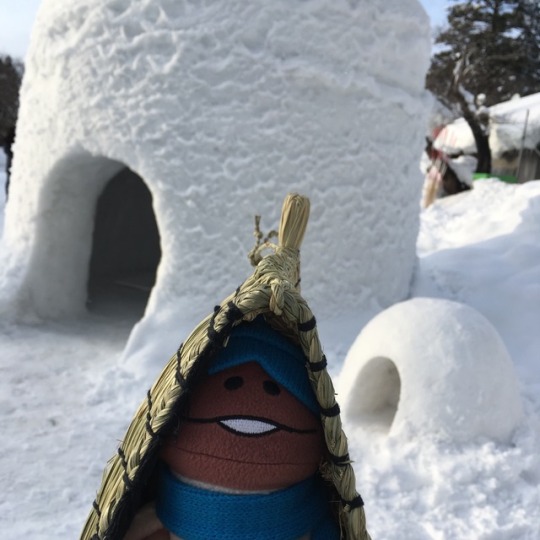
Nameko at Yokote Snow Festival “Yokote Kamakura”.
2 notes
·
View notes
Photo
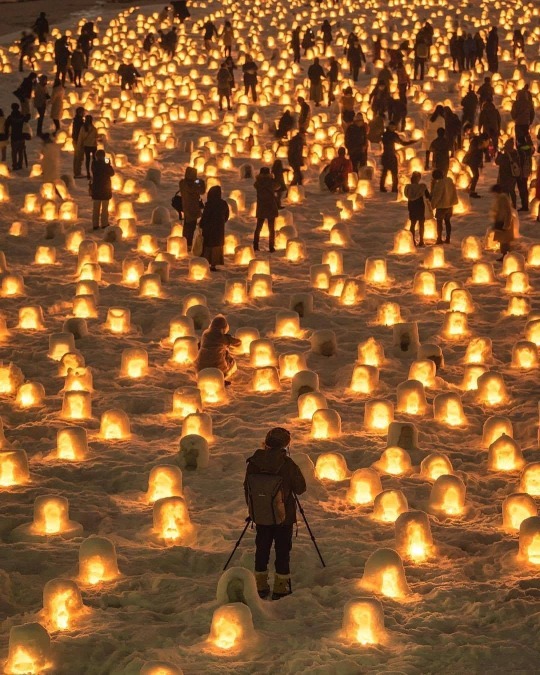
The Yokote Kamakura Matsuri, also known as Yokote Snow Festival, has been an annual tradition in Akita Prefecture for nearly half a millennium. In this case, kamakura refers to the snow huts that are the highlight of the festival. cc @hrk1108 (em Yokote–shi, Akita, Japan) https://www.instagram.com/p/B_9ao8ejVkj/?igshid=1aa18ngq2fw8p
0 notes
Text
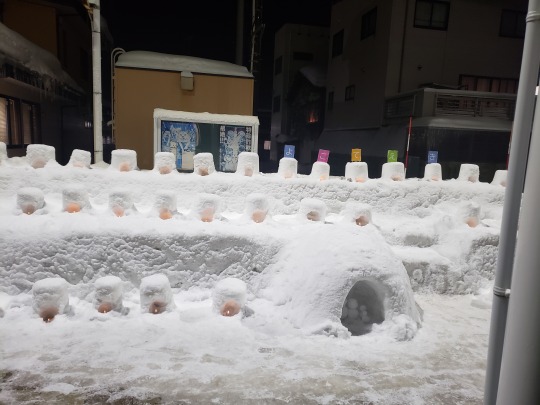

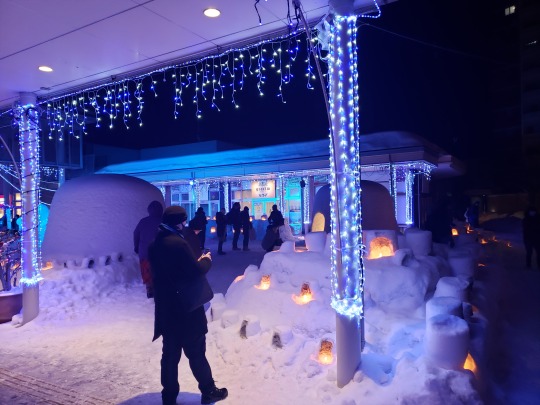
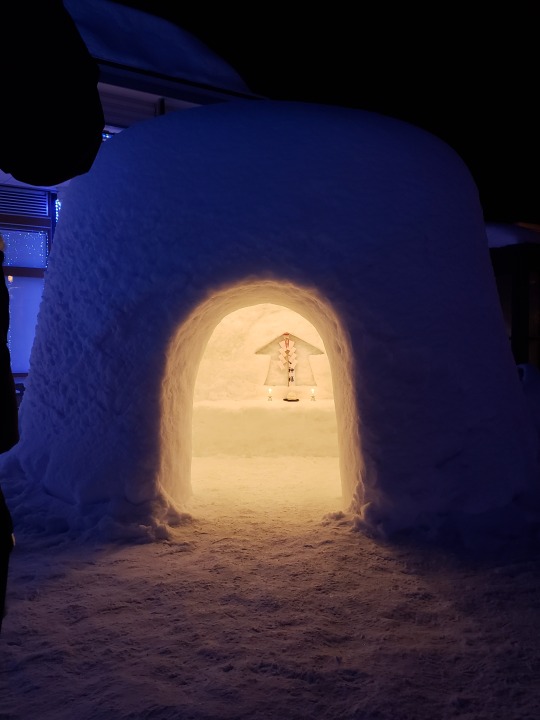
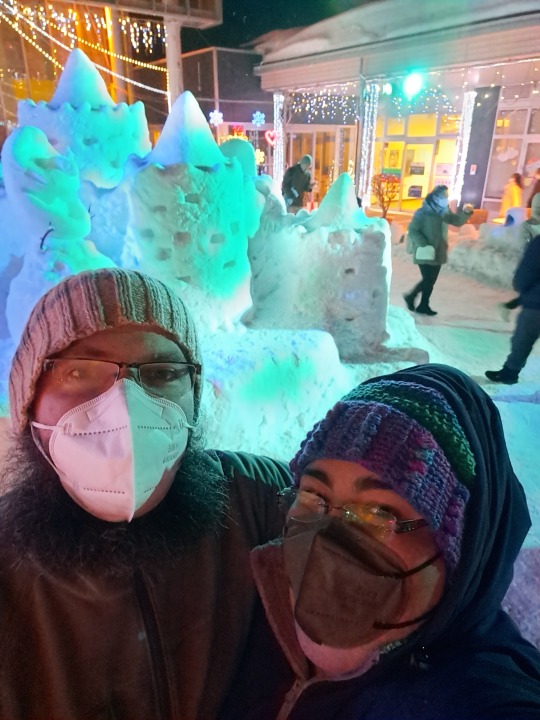

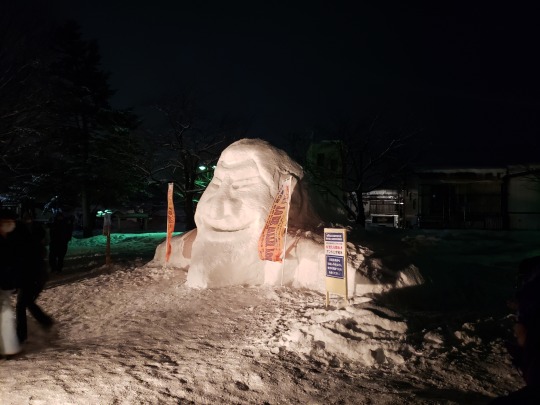

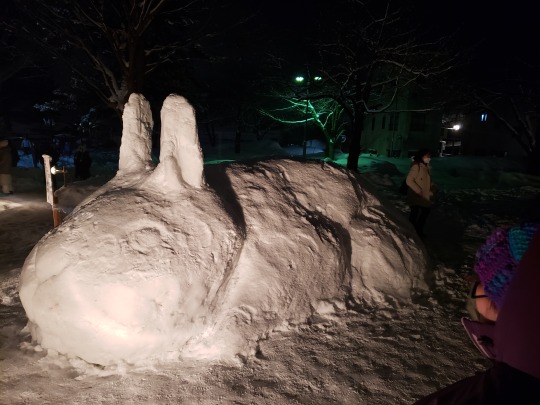
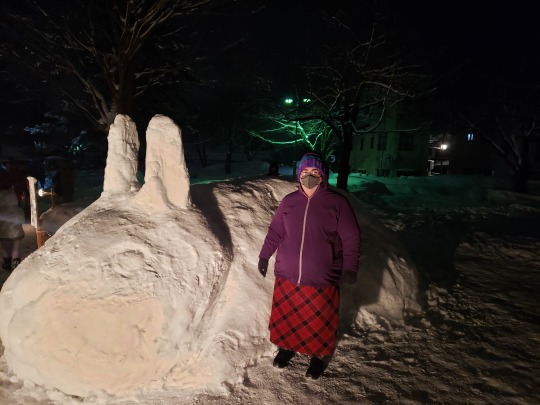

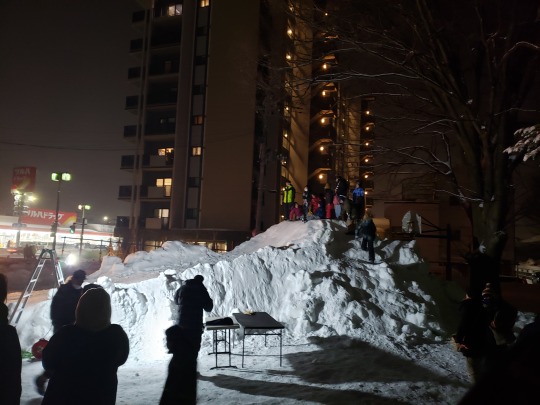
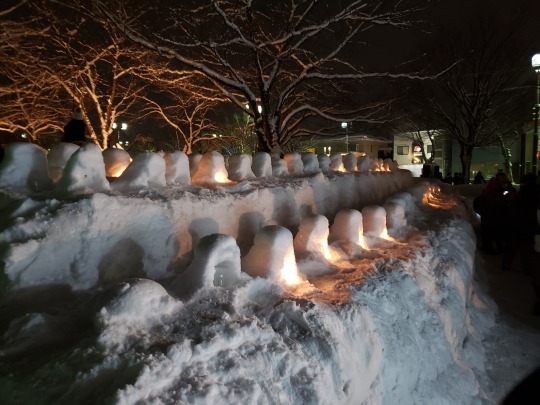
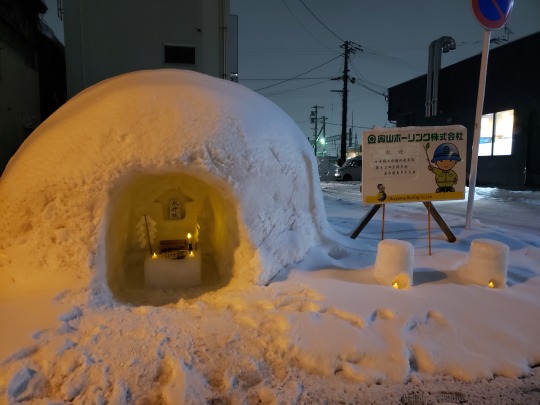
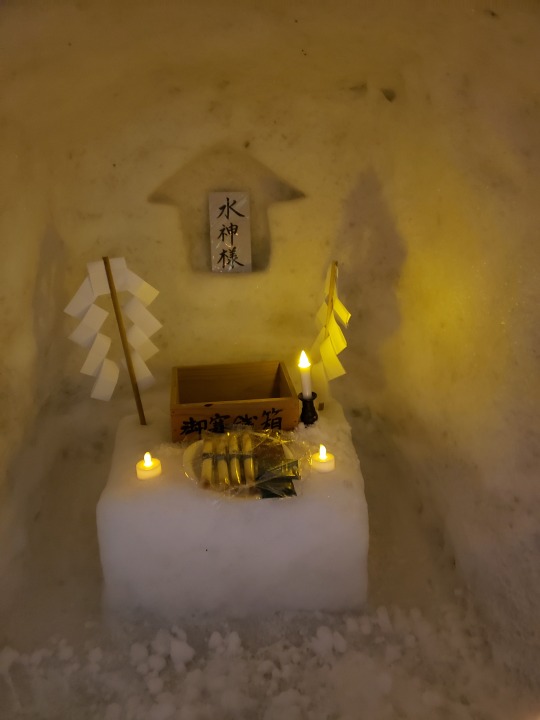
2023-02-15, Yokote: Our first visit to the Yokote Kamakura Festival. We weren't able to get here until late, so we didn't have much time before the last train out. Still! There were some lovely snow sculptures in a business plaza and the central park, including a sledding slope for the young'uns.
0 notes
Photo




Mari from team Lari here! The prefecture of the day is...drum roll....more drum roll...just a bit more...it's the Akita prefecture! Akita has the Sea of Japan to its west coast, boasts being the sixth largest prefecture of Japan, and has the Ou Mountain range to the west with the Dewa Mountain range cutting parallel right through the middle of the prefecture. What I'm seeing in my mind's eye is a whole bunch of mountains. You get a mountain, you get a mountain, everybody gets a mountain! Because of the high mountains, there are long winters with heavy snowfall and short mild summers. Akita is known for being a rice farming region famous for their kiritanpo-nabe (rice stew) and jizake sake (rice wine.) I'm just thinking about "Princess Monoke" where the priest mercenary makes that delicious looking rice stew. Argh, that always makes me hungry! Well, thanks to the abundance of mountains, there are also an abundance of onsens (hot springs.) Nyuto Onsen is a cluster of hot springs located in Hachimantai surrounded by evidence of past volcanic activity. Within the gathering of onsens (there's so many, so I won't list them out. Trust me, there's a bunch) the oldest hot spring, Tsurunoya, is almost 300 years old. Do you know what I can see at the United States that's 300 years old? Wait...oh, well, I was going to make a point at how little there is here that can be seen as evidence of our past history, but I remembered that I live in Florida that contains the city of St. Augustine, which is 450 years old and still has its Spanish fort n' everything. Well...I don't see any mountain range rock temples here like Iwate, so THERE! Both Laurel and I agree that we would love to visit the town of Kakunodate. It was a former castle town and stronghold for samurai, founded around 1620. Although the castle has long been taken down, most of the town has reminded untouched. It's one of the most preserved samurai towns with original architecture in tact. Laurel and I would like to visit to see the architecture ourselves. For me, it would be the history of the area. Laurel has always been fascinated with the design of Japanese samurai buildings. What we both agree on visiting are the cherry blossoms that are at prime budding time around late April and early May. Ah yes, and then we have the actual city of Akita. The city is known for the festival called, Kanto Matsuri. Around the beginning of August, followers hoist long bamboo poles hung with multiple, lit paper lanterns. Laurel says that she would love to go, and that the experience would be magical. I second her on that one. Hmn, and it seems that Akita has an art museum. Oh yeah, give that art! Although we aren't too interested in extreme cold weather and snow, the Yokote Kamakura Festival does sound like a great event to witness. On February 15th and 16th, citizens make little snow huts lit from within meant to please a water deity so that they obtain plentiful water for the year. As people walk around the snow hut, they may visit the tiny spaces and can be offered rice cakes or sake, but in return, they must make an offering to the water deity. This practice is over 450 years old, and it would truly be a deep experience to partake of. Oh boy, whenever I make these post, I only want to go to Japan even more AND I have a growing list of what I want to do there! Whew! Well, 4 of 43 is finished. Until next time!
3 notes
·
View notes
Photo
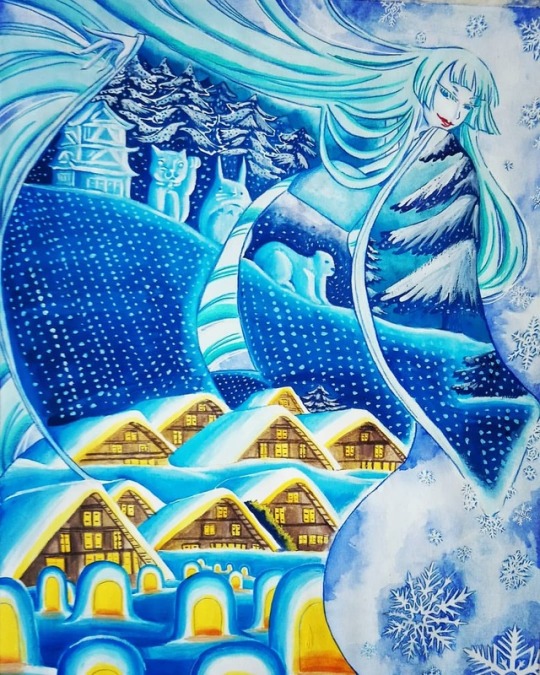
Ça y est, c'est l'hiver ! Pour fêter ça, une petite illustration qui fait un clin d'œil à la Yuki Onna (femme des neiges en japonais), au village de Shirakawago et aux igloos du festival Kamakura à Yokote (que l'on peut voir dans le très bel anime Elegant yôkai apartment life) #draw #illustration #solstice #hiver #snow #girl #japan #yukionna #festival #neige #sculpture #shirakawago #igloo #Kamakura #yokote #aquarelle #gouache #winter https://www.instagram.com/p/Brpr2pDBgLo/?utm_source=ig_tumblr_share&igshid=efiqpnwaxviq
#draw#illustration#solstice#hiver#snow#girl#japan#yukionna#festival#neige#sculpture#shirakawago#igloo#kamakura#yokote#aquarelle#gouache#winter
0 notes
Photo

Yokote Kamakura Snow Festival, Akita Japan 🇯🇵 Who would you share this romantic winter wonderland with? #KamakuraSnowFestival #WinterWonderland #IglooForTwo #Romantic #BucketList 📸Beautiful photo capture by @estrella1868 #Repost @nature ・・・ Amazing night at Akita, Japan 😍 Tag who you'd go here with ✨ Photo by @estrella1868 #nature https://www.instagram.com/p/BreItv6lUe0/?utm_source=ig_tumblr_share&igshid=1oox4808wdjk4
0 notes